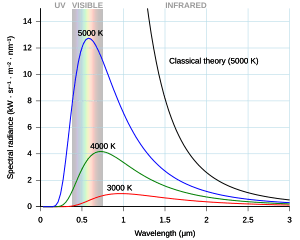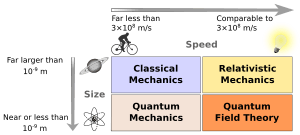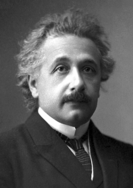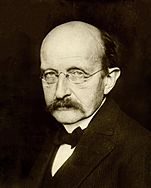Modern physics facts for kids
Modern physics is a part of physics that started around the early 1900s. It includes exciting areas like quantum mechanics and relativity. These branches changed how we understand the universe.
Think of it this way: Classical physics explains things we see every day, like how a ball rolls or how a car moves. It works well for normal speeds and sizes. But modern physics looks at more extreme situations. For example, it studies things moving almost as fast as light (that's special relativity) or super tiny particles like atoms (that's quantum mechanics). It also deals with huge amounts of energy.
Even though quantum and relativistic effects are always happening, they are usually too small to notice in our daily lives. They become very important when we look at things that are extremely fast, tiny, or energetic. Scientists are still working on combining quantum mechanics and general relativity into one big theory. This is one of the biggest unsolved puzzles in physics!
Modern physics helps us understand how matter and energy interact at a very deep level. The term "modern physics" means "up-to-date physics." However, it usually refers to physics that includes ideas from quantum mechanics (QM) or relativity (ER), both of which were big discoveries around 1890. These new ideas completely changed how scientists thought about the world.
You often see modern physics in action when things are at their "extremes." Quantum effects show up when things are very cold or very small. Relativistic effects appear when things are very fast or very far away. In between these extremes, classical physics usually works just fine. For example, if you study a gas at room temperature, classical physics explains it well. But if you cool that gas down to near absolute zero, you need modern physics to understand what's happening.
Sometimes, you can use the rules of modern physics to get back to the rules of classical physics. This happens when you look at modern physics in situations with slow speeds and large distances. It's like a special case where the modern rules simplify to the older, classical ones. This is called the classical limit.

Key Discoveries in Modern Physics
Modern physics is built on several important discoveries and experiments. These are some of the main ideas that form its foundation:
- Atomic Theory: How our understanding of the atom changed over time.
- Black-Body Radiation: How hot objects glow and why classical physics couldn't explain it.
- Oil Drop Experiment: An experiment that helped measure the charge of an electron.
- Franck–Hertz Experiment: Showed that atoms can only absorb specific amounts of energy.
- Geiger–Marsden Experiment: Also known as Rutherford's experiment, it showed that atoms have a tiny, dense center called a nucleus.
- Gravitational Lensing: When gravity from a massive object bends light, making distant objects appear distorted.
- Michelson–Morley Experiment: An experiment that showed light travels at the same speed no matter how the observer is moving.
- Photoelectric Effect: How light can knock electrons out of a metal, which helped show that light acts like tiny packets of energy called photons.
- Radioactive Phenomena: How unstable atoms break down and release energy.
- Perihelion Precession of Mercury: A tiny wobble in the orbit of the planet Mercury that could only be explained by Einstein's theory of general relativity.
- Stern–Gerlach Experiment: Showed that particles have a property called "spin."
- Wave–Particle Duality: The idea that particles like electrons and light can act like both waves and particles.
- Solid-State Physics: The study of how atoms are arranged in solid materials and how this affects their properties.
See Also
 In Spanish: Física moderna para niños
In Spanish: Física moderna para niños




